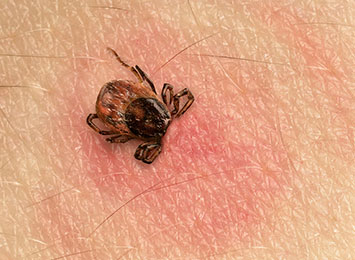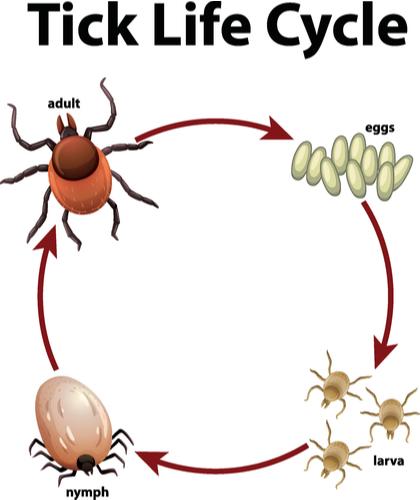Ticks are flat tear drop-shaped arachnids. They are related to mites and spiders and have eight barbed legs that can climb or hook onto nearly anything. Engorged ticks that have recently had a blood feast will be round or bean shaped.
Size: Varies from ⅛ inches to ¼ inches depending on species. Engorged ticks may look larger or rounder.
Color: Brown, red-brown, or tan bodies varying in shade from light to dark. Engorged ticks often appear darker.




